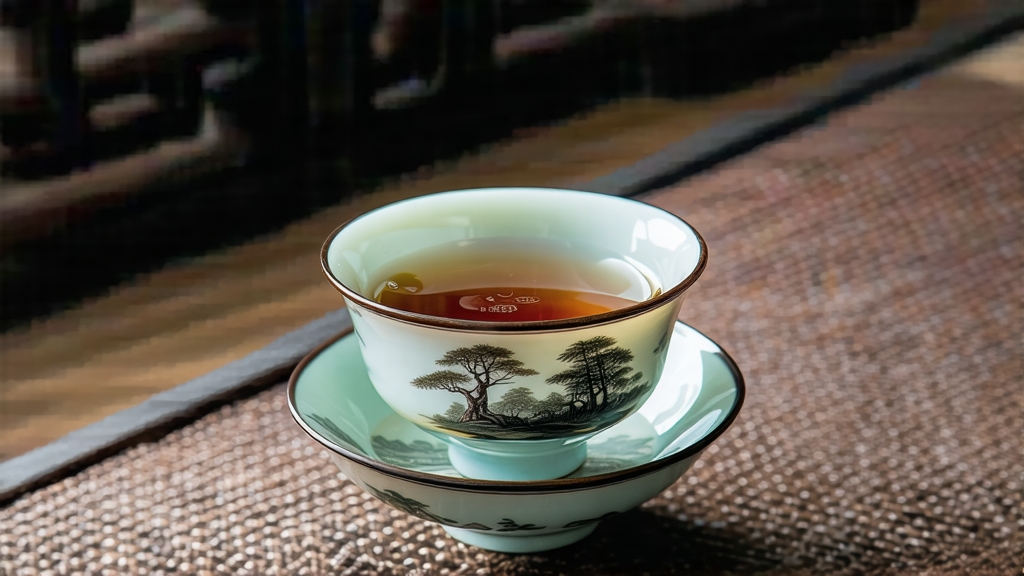
High in the mist-wrapped Wuyi Mountains of northern Fujian, narrow bamboo rafts still glide along the Nine-Bend River, carrying visitors past sheer cliffs whose crevices cradle one of China’s most storied oolong cultivars—Shui Xian, literally the “Water Immortal.” To the Chinese palate, the name evokes both floral sweetness and a deep, almost mineral gravitas that locals proudly call yan yun, “rock rhyme.” To the international tea traveler, Shui Xian offers a liquid map of geology, history, and craftsmanship compressed into a single amber infusion. This essay invites you to walk that map, from 11th-century monastic legends to the charcoal pits still glowing tonight in the village of Dàhóngpáo, and to learn how to unlock the cultivar’s layered fragrance in your own kitchen.
-
Myth, Monk, and Merchant: A 1,000-Year Journey
The first written record of Shui Xian appears in a 12th-century Song dynasty gazetteer that lists “immortal water” among tribute teas. Local monks claim the name originated when a drought-stricken hermit dreamed of a celestial being who struck the cliffside with a willow branch, releasing a spring whose waters revived withered tea bushes overnight. Whatever the legend’s veracity, by the early Qing period (17th century) Shui Xian had migrated from temple gardens to the rocky terraces of Huiyuan, Wuyi, and begun its transformation into a semi-wild, cliff-rooted cultivar prized for its ability to absorb and reflect the minerality of volcanic tuff and weathered granite. Tea merchants from Guangzhou and Macau, eager to satisfy European demand for “Bohea,” traded silver for heavily roasted Shui Xian, inadvertently fixing the style that modern drinkers now recognize as the classic Wuyi rock oolong. -
Botanical Identity: Cultivar vs. Brand
In the Wuyi micro-region, “Shui Xian” functions simultaneously as a cultivar (Camellia sinensis var. sinensis cv. Shui Xian) and a stylistic label. The original “Old Bush” (老枞水仙) plants—some exceeding 200 years—grow gnarled and moss-covered on 60-degree slopes, their roots drilling into fissures so narrow that pickers must tie themselves to bamboo stakes. Off-mountain, the same cultivar is widely planted in the nearby Jianyang and Nanping plains; here faster growth and fertile soil yield a larger, softer leaf that lacks cliff-born mineral tension. Purists therefore distinguish between zheng yan (core cliff), ban yan (semi-cliff), and zhou cha (river-flat) Shui Xian, with prices spreading across two orders of magnitude. A final category, “Dancong-style Shui Xian,” has recently emerged in Phoenix Mountain, Guangdong, where the plant is processed with lighter oxidation to mimic honeyed aromatics—an inter-provincial dialogue that illustrates the cultivar’s adaptability. -
Crafting the Rock Rhyme: From Pluck to Charcoal Kiss
Shui Xian is harvested in late April, when three-and-a-half leaves have unfolded and the central vein shows a faint purple tint. After a brief outdoor withering to reduce grassy volatiles, the leaf is shaken in 1.2-meter diameter bamboo drums every hour through the night, initiating edge-oxidation that will stop precisely at 30–35 %. The critical “water removal” (杀青) step employs a 280 °C drum roaster for less than four minutes—just long enough to fix the green center while preserving enzymes that later generate cocoa and orchid notes.
Next comes the Wuyi signature: repeated charcoal roasting (焙火). For commercial grades, a single 80 °C bake suffices; for competition lots, artisans conduct three “足火” (full-fire) cycles of 12 hours each, sandwiching the leaf between layers of local paulownia ash that moderates heat and imparts a whisper of smoked cream. After each cycle the tea rests 20–30 days so that residual moisture migrates outward, preventing the sour “fire taste” that novices mistake for authenticity. The finished leaf is dark chestnut, curled like a dragon’s claw, and releases a dry aroma of burnt caramel and wet stone.
- Tasting the Cliff: A Sensory Roadmap
Professional cupping in Wuyi follows a rigid 5-